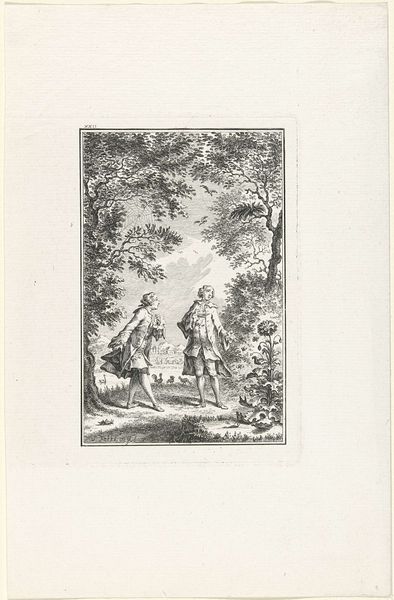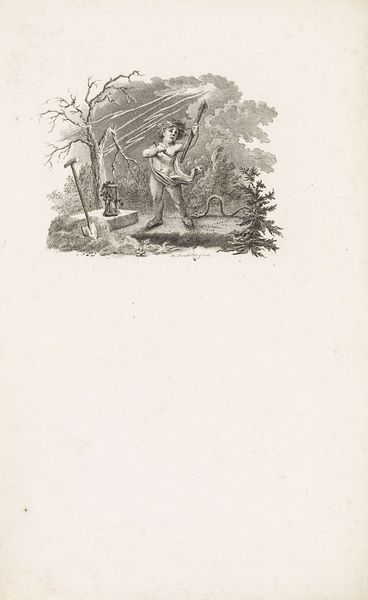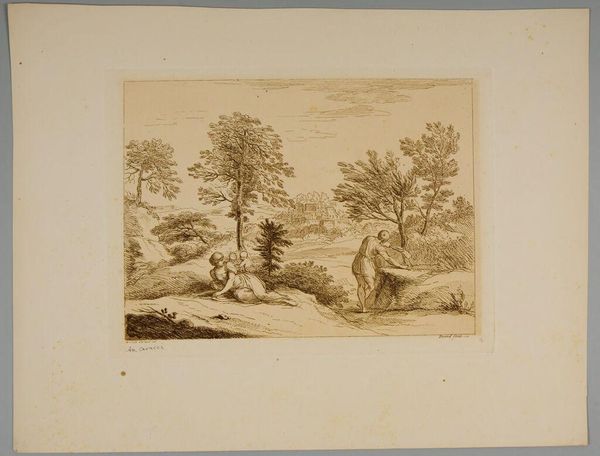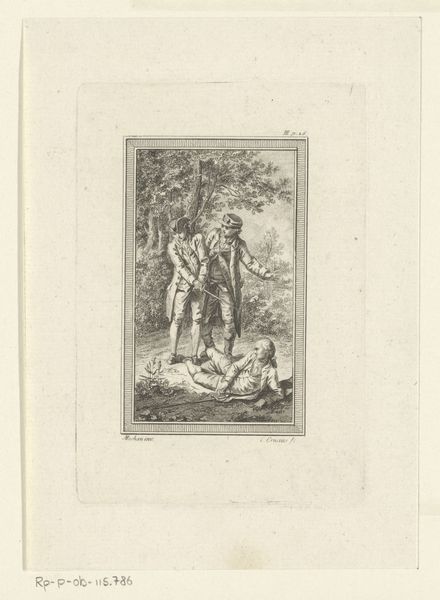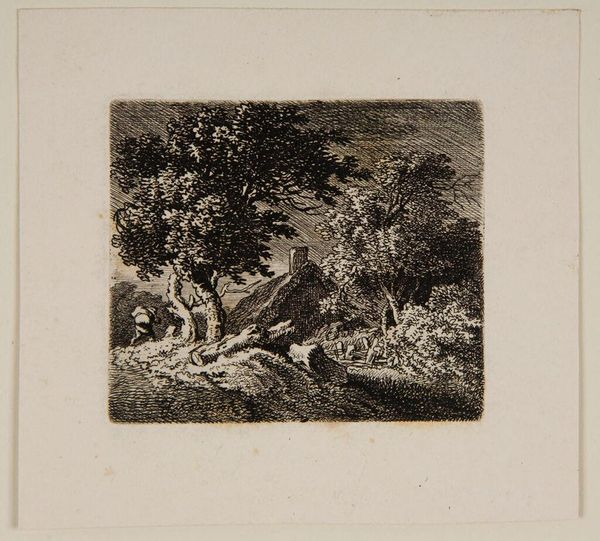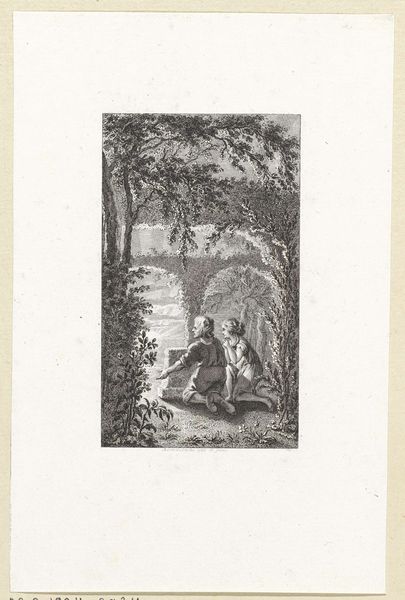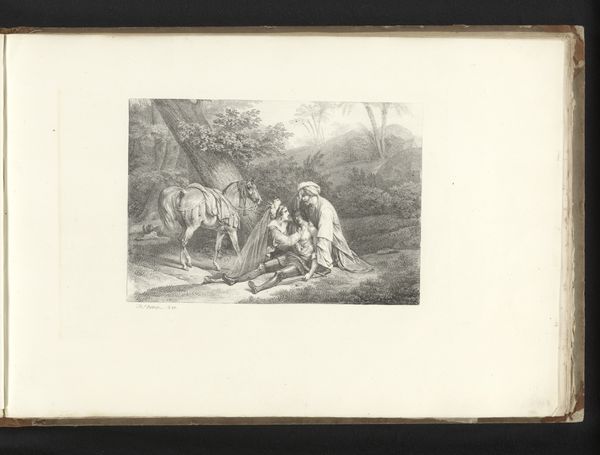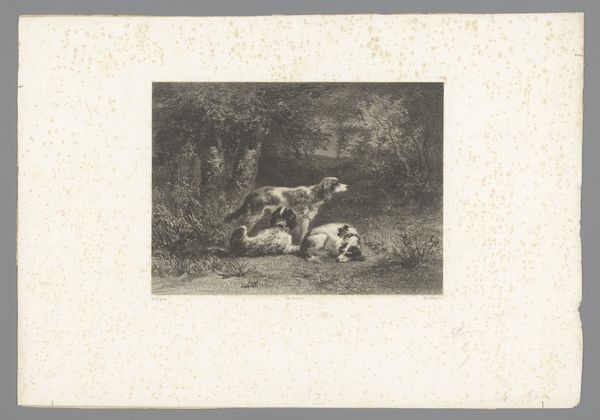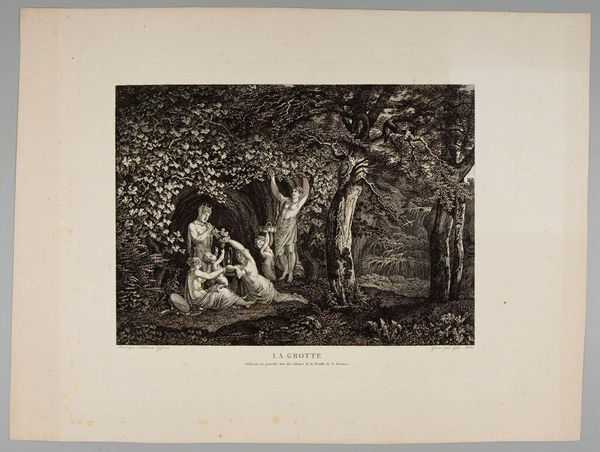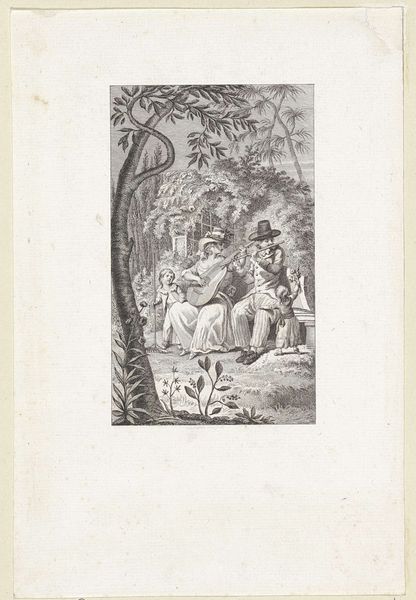
print, paper, engraving
# print
#
landscape
#
figuration
#
paper
#
romanticism
#
genre-painting
#
engraving
Dimensions: height 145 mm, width 187 mm
Copyright: Rijks Museum: Open Domain
Curator: Here we have “Jongen en vrouw in landschap,” or "Boy and Woman in a Landscape," a print created between 1799 and 1856 by Abraham Lion Zeelander. Editor: My first impression is that it is sweetly melancholic; the texture is amazing. I get this really overwhelming sense of gentle fatigue. Curator: It’s interesting you say that, because this print comes out of the Romantic period, where there was a huge interest in rural life and the everyday experiences of common people, but also an idealization of those experiences. It’s presented almost as genre-painting. Editor: Yes! But what I find beautiful about it, is that even with this idealization, you get a sense that whatever’s happening, it’s weighted down with these unspoken implications—there’s almost an emptiness and yet something is actually there. The barefoot woman sitting slightly slumped, is taking a rest. Is the boy a traveller? And where might they both be going? Curator: You are right to call attention to that narrative ambiguity. This print really participates in a larger art market that was focused on presenting these seemingly simple scenes from daily life, which nevertheless served the crucial function of constructing particular ideals of labor and gender. Editor: Oh, absolutely! You know, these artists of the period were, perhaps without fully realizing it, projecting certain feelings of how they thought the world *ought* to be, filtered, of course, through all those constraints that life forces upon one, right? And here is one single still point! What they couldn’t say is here and that’s beautiful. The details really draw me in—it’s just so delicate. Curator: Indeed, prints like this served a pedagogical purpose; they visually codified an implicit moral code, even when the explicit narrative is unclear, inviting viewers to reflect on social relationships. Editor: Thanks to these types of landscape imagery we also find a gentle moment, which allows our imaginations to project stories. For me, the simple technique highlights these stories we create and ultimately these figures find their way. It’s nice to share these moments, isn't it?
Comments
No comments
Be the first to comment and join the conversation on the ultimate creative platform.
